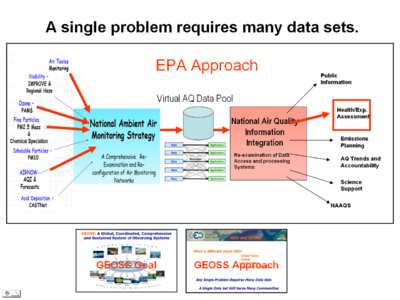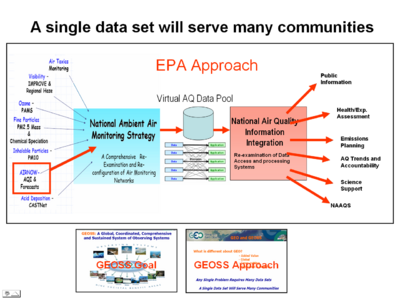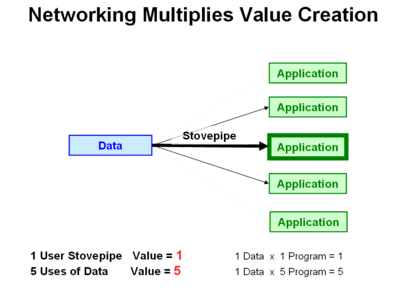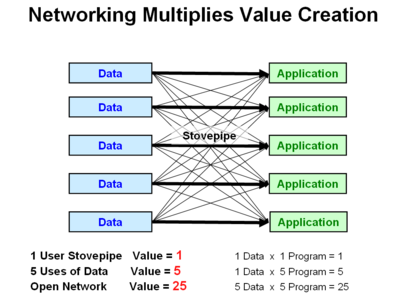Networking of Air Quality Data
What links here: Networking of Air Quality Data
Background
The mission of the Environmental Protection Agency is to protect human health and the environment. Air quality management involves many activities including setting and maintaing air quality standards, monitoring trends, informing the public, etc. Each of these activities have different information needs. In the past both the monitoring and assessment of air quality has been performed in specific programs each directed and somewhat confined to the specific applications that they served.
Recently, the Agency
EPA Applications of Air Quality Data
The primary purpose of AirNOW is to deliver air quality status and forecast to the public. However, the AIRNow program delivers useful information to many different applications spanning several societal benefit areas including, health and ecological effect, disasters, and others.
For more information, the reader is referred to the AirNOW and AirNOW Tech websites. A structured description of the AIRNow data system can be found on the AirNOW profile. A community workspace, the AIRNOW dataspace, facilitates the gathering of community contributed comments, resources, and feedback related to AirNOW.
Public Information
Delineating the numerous pathways in which the AirNOW data are transmitted to the public is beyond the scope of this report.
Health/Exp. Assessment
In recent years the health effects of air pollutants in the U.S. are primarily attributed to surface ozone and fine particles. The AirNOW network provides monitoring data for these two pollutants. The companion network is the regulatory network which uses daily average filter samples, collected every third day to characterize the PM2.5 pattern. Health exposures during short-term fine particle peaks, lasting a few hours, and the exposure during the off days cannot be estimated from the regulatory PM2.5 FRM sampling network. In the past, epidemiological and event-based health studies had to rely on PM2.5 surrogates such as visibility data to associate health effect measures with the corresponding PM2.5 exposure.
For this reason the continuous measurements of PM2.5 allows better association of health and pollution signals. This in turn should permit the development of more suitable air quality standards for PM2.5. The continuous AirNOW monitoring data for ozone is compatible to the continuous ozone monitors in the regulatory ozone network.
Google Scholar Search - AirNOW and health
Emissions Estimation and Planning
An interesting application of the hourly AirNOW data pertains to improved estimation of emissions. Many
Google Scholar Search - AirNOW and Emission
AQ Trends and Accountability
Google Scholar Search - AirNOW and Trend
Intercontinental Transport Policy
Google Scholar Search - AirNOW and Intercontinental Transport
Science Support
Transport, Vertical Exchange Peocesses; Chemistry, Emission (weekly cycle)
NAAQS
Google Scholar - AIRNow and NAAQS
- Regulatory (Except Event)
- Regional Haze Rule (RPO)
NASA Applications of Air Quality Data
NOAA Applications of Air Quality Data
Model Eveluation (Assimilations/Verification)



